If you feel like you’re drowning in unassigned worksheets and half-finished student work, you’ve come to the right place! On this page that’s excerpted from The Cornerstone book, you’ll learn how to create consistent routines for passing papers out to students and collecting them back so you can focus your attention on the important stuff.
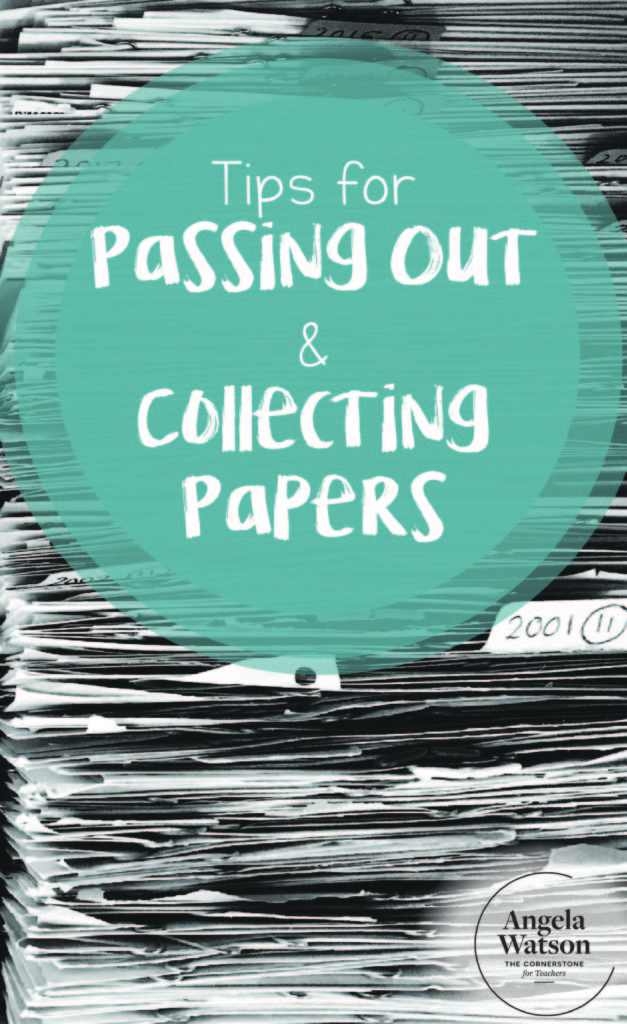
Simple solutions
How often do you hear, “I didn’t get one!” or “You gave me two by mistake!” But when you’re ready to teach the lesson, you don’t have extras for those who need them, nor do you want to be handed the leftovers.
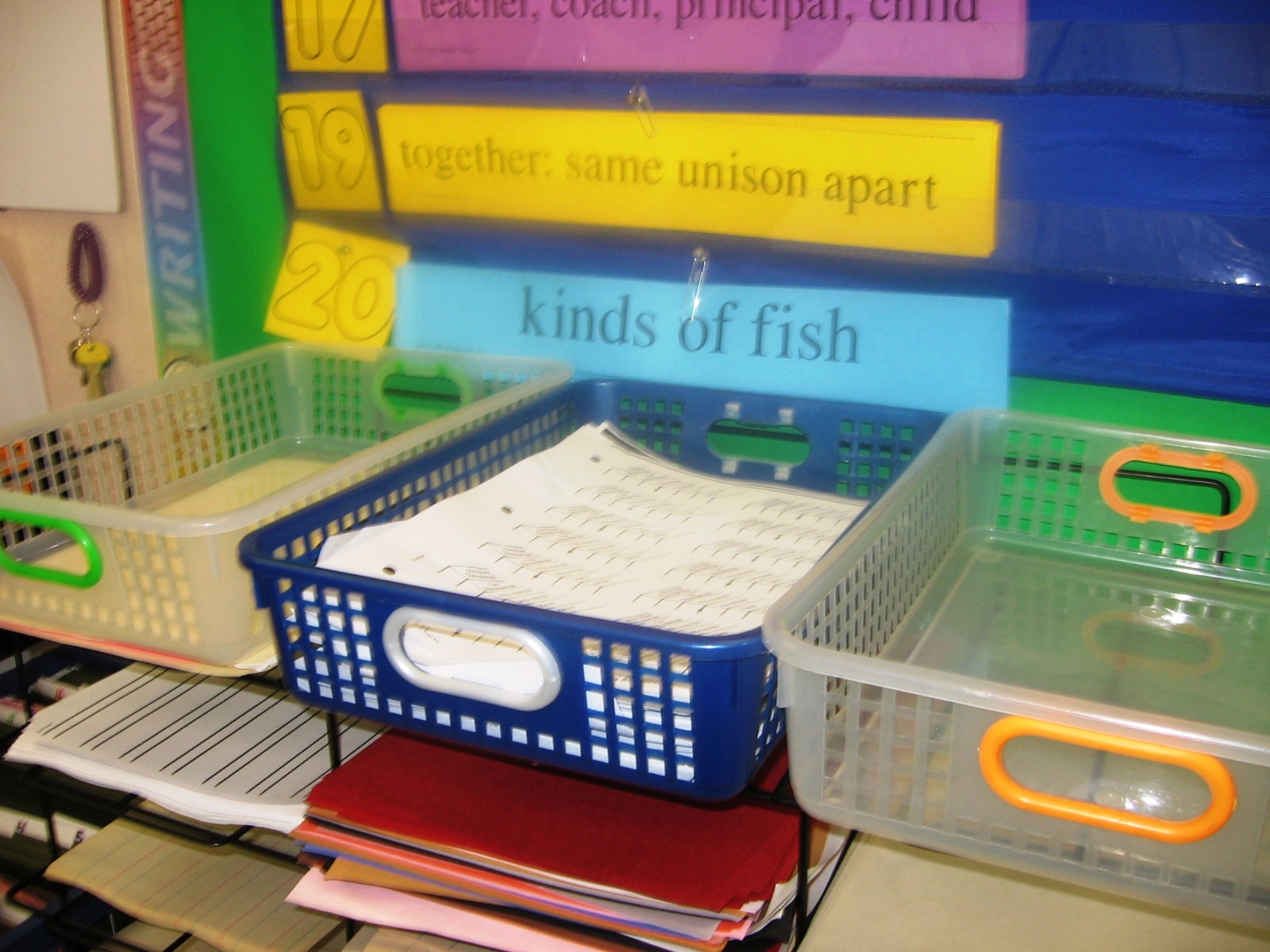
Teach students that all extra papers are kept in a special drawer or basket labeled ‘Extra Class Work Papers’. Children can simply walk over to the designated place and take (or put back) papers as needed without ever making you aware of the situation. When a student says, “I didn’t get a paper!” smile, shrug, and say, “I don’t have them, either,” while pointing to the basket. I like using a deep container because I don’t clean it out often. You would be surprised how many times either a child or I need a paper that was passed out weeks ago. Every few months, I’ll take out the oldest papers from the bottom and let kids complete them during Fun Friday if they want to.
There are a variety of ways you can distribute papers and related instructional materials to students. You may need to try several different methods to see which best fits your needs:
- The teacher can hand materials to one person in each group or row.
- Helpers can hand materials to one person in each group or row.
- Helpers can pass out materials to each individual child.
Each of these three methods is explored in detail in The Cornerstone book.
Collecting student work
Passing in papers
Have one member of each group (or the last person in each row) be responsible for collecting all work for the team. This way you will never have students who ‘forget’ to turn in their work or ‘lose’ it immediately after finishing (which happens much more frequently than I ever would have imagined before I began teaching). This person may also be assigned the task of checking for names and handing papers back to anyone who hasn’t used the correct heading.
Insist that students pass in papers so that they are all facing the same direction. We practice this a LOT at the beginning of the year, and if (more like WHEN) they get lazy about it during the year, I have the Paper Collector give all the papers back to their owners and they do it again, with reinforcement narration, until they get it right.
You may want to use baskets when kids pass in their papers. Some years I have a small class or fairly mature class that doesn’t need them, but in general, I’ve found that papers are far less likely to be dropped, shuffled, or lost when kids pass a basket instead of a pile.
Placing papers in a designated spot to be graded
After papers have been passed to one person in the group or row and that person has begun checking to see that all papers are headed correctly and facing the right way, a Paper Collector can take the stacks. My Paper Collector job is separate from my two Paper Passer jobs, because sometimes I need to have a set of materials distributed immediately after the old ones are collected.
The Paper Collector should have one consistent place to always put papers. The designated spot should NOT be on your desk!If you’re like me, you’ve got enough stuff on your desk as it is—you don’t need kids adding to the clutter. I use the top of a low file cabinet to hold trays for student work. In the past, I had a small student desk adjacent to my own where papers went. A shelf or windowsill would work just as well.
Your Paper Collector can put a paperclip on each stack of work, if you like. He could also put the work in alphabetical order if that makes it easier for you to record the grades. Simply assign each child a number and teach students to write it in the top right hand corner of their papers: the Paper Collector can then just put papers in number order. The process can take a minute or two to complete, but if you need it done, you may find it’s worth training students to do it for you.
Sending papers home with students
Organizing graded work and parent notices
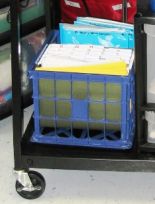
When you first begun organizing your classroom in August, you should have set up a location for graded papers and fliers that need to be sent home. Chapter 4, Avoiding the Paper Trap, shows photographs of how a large basket, hanging file folders, or ‘mailbox’ system can be used. Papers for the entire class can be kept in one basket or container and passed out at the end of the day or week. Or, you could have student helpers file the papers into individual hanging files for each student, and then distribute the file contents to students as often as you choose. A third method is to use ‘mailboxes’.
Tips for using ‘mailboxes’ (individual slots for student papers)
If you want to send papers home daily (or as you grade them) along with fliers and notices, use a ‘mailbox system’. Combination metal-and-plastic paper organizers like the one pictured on the left are ideal, but can cost close to $100 at office supply and educational stores. (I was fortunate to inherit mine from a retiring teacher.) Cardboard versions can be purchased fairly cheaply, but don’t typically last longer than one or two school years, so I don’t recommend them. However, cubbies, divided shelving systems, and even pocket charts could be utilized in the same manner.
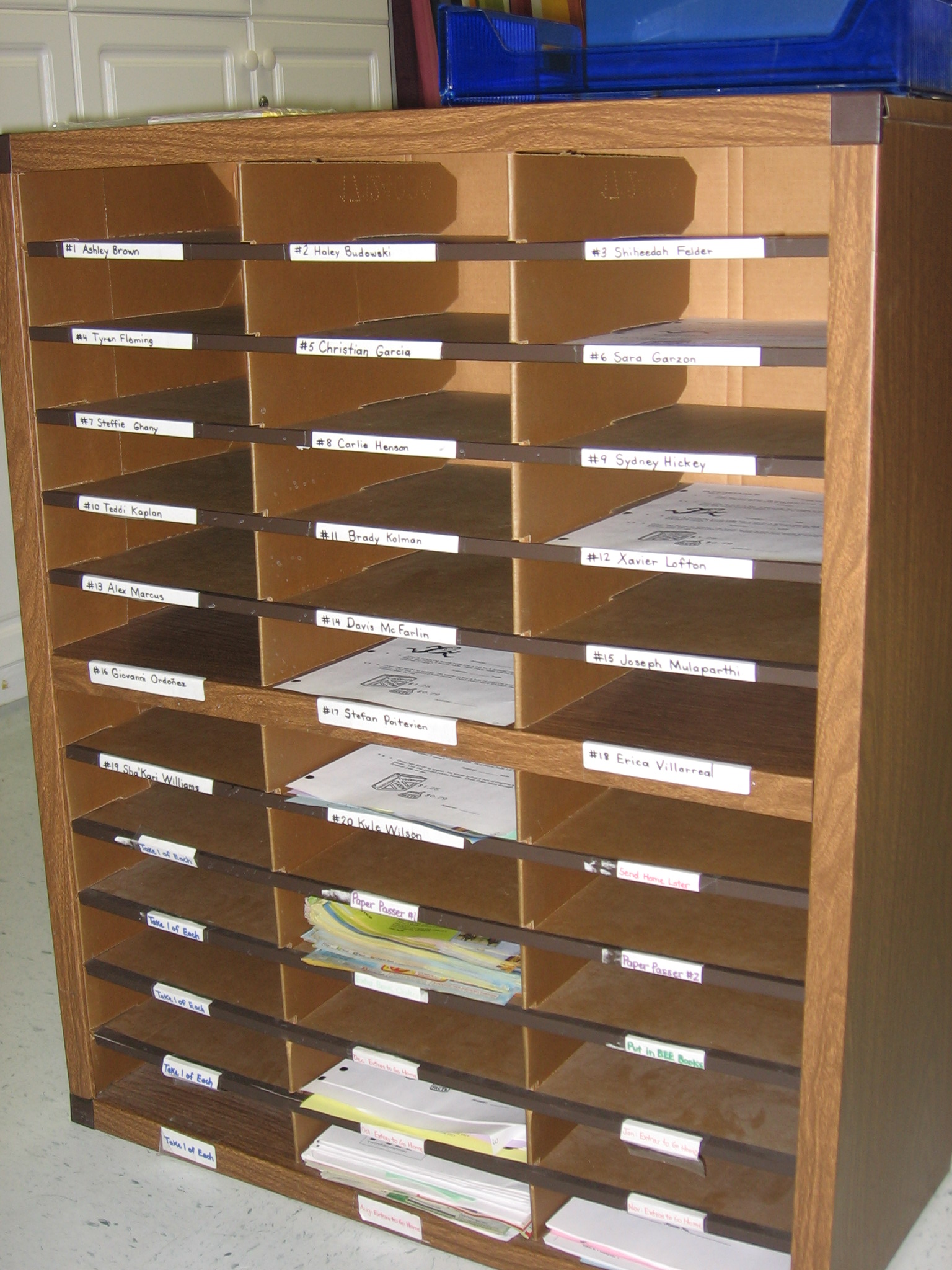
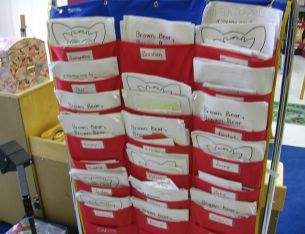
A consistent system for papers to go home
If you want to send papers home weekly, choose one day and try to always send things home on that day so that parents know what to expect. Many teachers have Friday Folders; others do Monday Folders so that papers can be graded over the weekend (which I hope you aren’t having to do on a regular basis). You can choose whichever day works best for you, but try to be consistent.
It’s helpful to have a special folder for sending home papers that parents and kids instantly recognize. Laminated two-pocket folders will last throughout the entire year for most kids and cost around $0.10 each. Even manila envelopes or plain file folders will do. Ideas for ensuring student accountability for graded work are included in Chapter 31, Keeping Parents Informed.
Collecting forms, money, and other papers from students
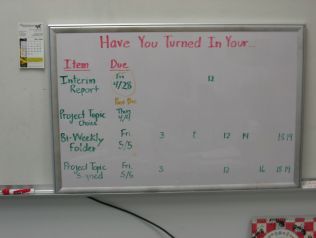
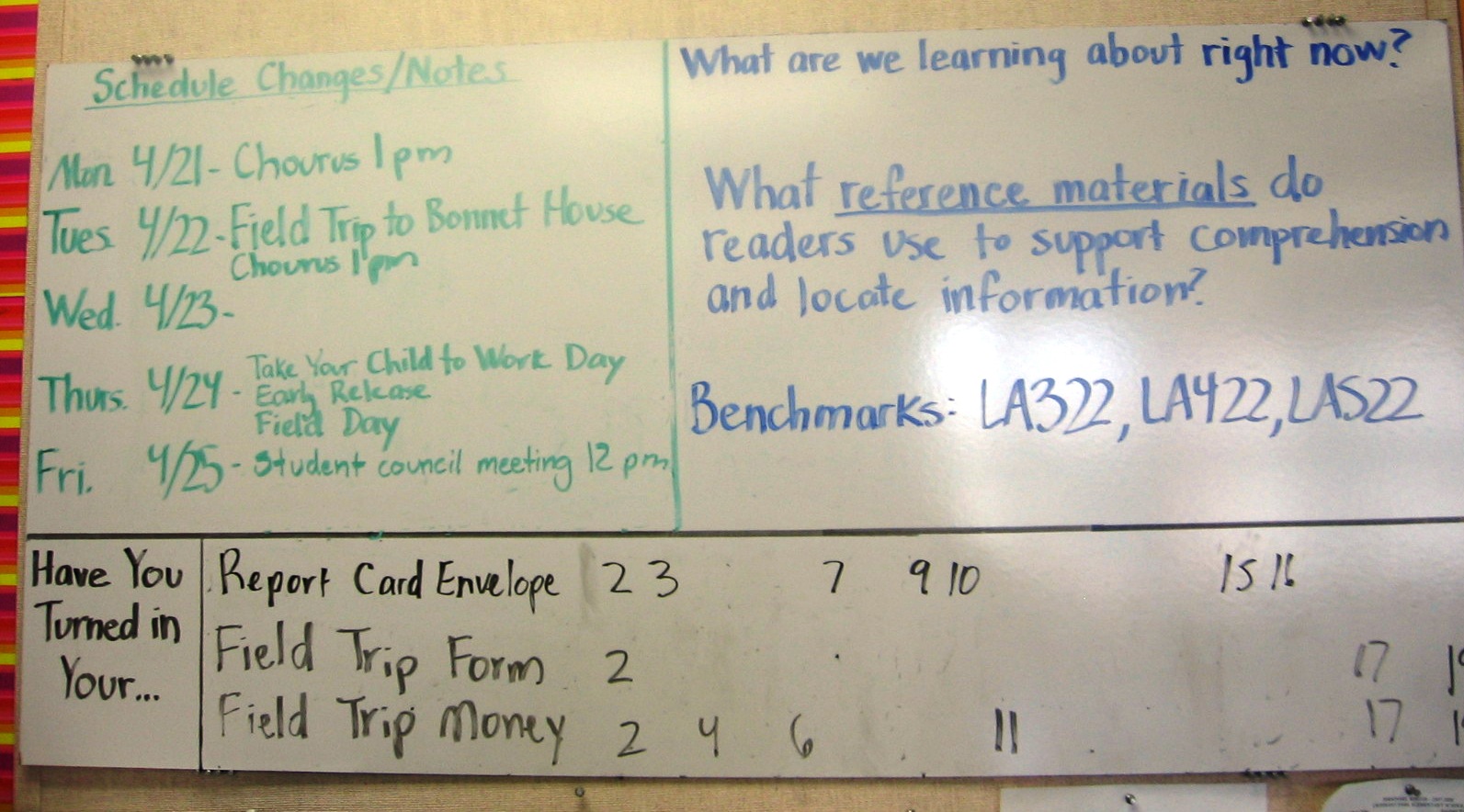
Students can be trained to always place items they have for you inside your in-box (a special container in a location on or near your desk). I collect forms first thing in the morning ONLY (8:00-8:20), giving one or two verbal reminders (“Anyone else have book order money? Last call!”). Students put the forms in my in-box and sit down. At 8:20, I sort through the forms all at once and erase the numbers off the board shown in the photograph.
While I prefer to handle everything right away each morning, I do make my in-box available at all times for students to turn in notes and other items. This prevents students from handing miscellaneous papers to me throughout the day, or leaving them in random places where they will get misplaced before I have a chance to examine and respond to them.
It’s helpful to have a visual reminder for you and the kids to determine what materials are still outstanding. On a small whiteboard, I write the name of the item, the date it’s due, and then the students’ numbers (1-20 or whatever: this is easier than writing names and protects confidentiality, since visitors to the classroom won’t be able to match kids with numbers).
The children can erase their numbers themselves when they turn their papers in, but sometimes they erase the wrong thing, so you’ll have to keep an eye on them. No number is erased until I have personally checked to make sure the form is there and filled out completely and correctly. When something is overdue, I circle it in yellow and indicate that on the board.
You can have a variety of consequences for past due forms: I usually take five minutes of recess or Fun Friday if it’s something really important and more than a week late. I do think it’s important to have some kind of consequence: kids need to get used to deadlines, including some inflexible ones. However, I always try to work with those children who aren’t able to get forms returned in a timely manner because of problems in the home.
You can find out more about the three different methods for passing out worksheets and materials to students, and how to teach your class to use one or all of them. You can also read detailed instructions for inexpensively obtaining and using ‘mailboxes’ for children’s to-go-home papers. Check out Chapter 11 of The Cornerstone, ‘Tips and Tricks for Difficult Procedures’. The chapter also addresses bathroom, water fountain, lining up, and hallway procedures.

Angela Watson
Founder and Writer
Sign up to get new Truth for Teachers articles in your inbox
Discussion
OR

Join our
community
of educators
If you are a teacher who is interested in contributing to the Truth for Teachers website, please click here for more information.
















Thank you so much for this and your podcast! I’m going into my 5th year teaching and am finally realizing the real value of teaching routines and procedures effectively. All of my frustrations have stemmed from me being unable to do so with my previous classes. This is preparing me to do it right this year and hopefully in return have my class run more smoothly! Usually I hate practicing procedures, but now I’m actually looking forward to it.
Oh good, I’m so glad! What a difference procedure instruction makes, right? If you need more info, check out my course. That’s where I show you in detail how to figure out exactly what you want from students and teach each and every procedure. 🙂
Great ideas! I actually use something similar in my 7th grade class. I’ve always had 3 sections and this year I have a 4th. I’ve been searching everywhere for a 4th bin for my “yellow” class. Do you remember where you got the yellow bin/tray that you have in the first picture on this page?? I have a blue, purple, and pink one and would love to find a matching yellow one. Thanks!!
I had a similar problem this year! I ended up with wire baskets and I color-coded the top edge by wrapping it with pipe cleaners in my designated colors.
As a new teacher (interned last year) I really love all these tips! Paper definitely overwhelmed my desk! And I wasnt great about going over or returning graded work in a timely let alone an organized fashion! Thank you! ❤️